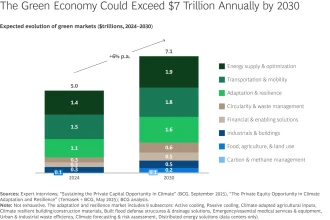An analysis of national climate plans released today at the COP30 climate summit warns that countries are failing to carry out the core work required to reduce emissions by halting and reversing deforestation and forest degradation, and are instead pushing carbon removal schemes, such as large-scale tree planting, to levels that are far beyond what’s achievable.
The report from a global consortium of experts led by the University of Melbourne explains why countries are relying on unrealistic levels of land-based efforts to achieve net-zero emissions — rather than pursuing more realistic climate solutions that involve protecting existing forests and phasing out fossil fuels.
It points out that while forest advocates often link the lack of action to a lack of finance for forest protection, the real impediment is a global economic system that pits economic development against ecosystem preservation. And it outlines a series of reforms, many already underway, that can resolve this fundamental conflict and align critical climate and biodiversity goals with economic goals.
“Why are so many countries ignoring forest protection as a key pillar of climate targets? The answer is that they live in a world where heavy sovereign debt burdens and industry-friendly tax and trade policies force many of them to exploit forests to keep their economies from crashing,” said Kate Dooley, lead author of the report, The Land Gap 2025, and a researcher at the University of Melbourne. “Yet the bitter irony is that, over the long-term, healthy forests are essential to healthy economies due to the climate benefits, job opportunities and ecosystem services they provide.”
The report identifies two essential flaws in national climate plans submitted for COP30 — a “land gap” involving a chasm between governments’ reliance on land to achieve their carbon mitigation goals and what’s actually achievable; and a “forest gap” involving the gap between global commitments to halt deforestation and forest degradation by 2030 and the likely outcomes of country pledges.
The land gap assessment examines pledges delivered at COP30 (as of October 31). It focuses on country pledges to use land-based carbon removal initiatives such as large-scale tree planting, forest restoration, and bioenergy capture and storage projects to meet their obligations under the 2015 Paris Agreement. It found that countries would have to devote just over 1 billion hectares of land — an area larger than the size of Australia — to carbon removal to achieve their targets, which represents a slight increase compared to the Land Gap report from 2022.
Moreover, the new study reveals that much of the promised savings would take decades to materialize. It also warns that the amount of land required to achieve such a massive level of carbon removal would put lands critical to the survival of marginalized groups like Indigenous peoples, local communities and smallholder farmers at risk.
Meanwhile, the authors note that “pledges for reducing emissions through halting and reversing deforestation and degradation are limited” in national plans.
They discovered the plans generate a significant forest gap between the firm promises countries made at COP28 in Dubai to halt and reverse deforestation and forest degradation by 2030 and the likely outcome of pledges now in play at COP30.
The report shows that the annual rate of deforestation globally would still be 4 million hectares in 2030, with another 16 million hectares of forests being degraded — a forest gap of 20 million hectares.
The 2025 Land Gap assessment covers all pledges countries have submitted to the United Nation’s climate secretariat, including climate plans known as “nationally determined contributions,” or NDCs, and long-term strategies for 2050. It is updated from the 2022 analysis to include new pledges submitted in the year prior to COP30, with less than 40% of parties to the Paris Agreement having submitted a new NDC.
Debt, Tax and Trade: Unlocking Finance by Confronting the Triple Threat to Forests
The authors of the report delve deeper into underlying forces that have produced the overemphasis on land-based carbon removal schemes and underemphasis on forest protection in national climate plans. And they conclude that if leaders at COP30 want to meet their commitments to reduce carbon and protect forests, they need to seek reforms to an outdated economic system, with a focus on development pathways that unlock financing for forests by linking economic resilience to ecosystem resilience.
”That’s because the biggest threat to forests today — and the carbon they hold — is a global economic system shaped by rules and financial flows that lock many countries, especially in the Global South, into a heavy reliance on commercial logging, mining and industrial-scale crop production simply to pay for basic necessities,” said Dr. Rebecca Ray, of Boston University’s Global Development Policy Center.
“Reshaping those rules could relieve pressure to exploit forests to meet short-term obligations, which could have an immediate impact on deforestation levels while freeing up large amounts of money to invest in forests.”
The authors noted that today much of the global push to protect forests revolves around innovative financing mechanisms, like the Tropical Forest Forever Facility (TFFF), which they said are important but do not address the full range of powerful forces driving forest destruction. For example, they said that the TFFF is expected to generate $3 to $4 billion per year while the Forest Declaration Assessment released in advance of COP30 estimates that countries would need $117 to $299 billion per year to achieve their 2030 goals for forest protection.
However, they said such amounts could be reached through reforms in areas like sovereign debt burdens and tax and trade policy to address the “inherent contradictions between economic development and ecosystem preservation” that are baked into the prevailing economic order.




